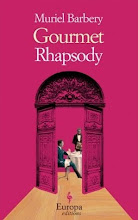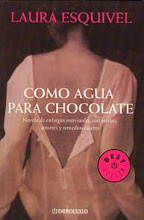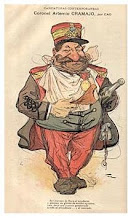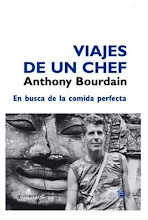BILL CLINTON has dined at Bukhara, an upscale restaurant in New Delhi, on just two occasions, but the afterglow of those visits has never worn off. The clientele, it seems, won’t let it.
Since that first meal, in 2000, so many customers have uttered some variation of “Give us what the president had,” that the restaurant has started serving a mixed-meat sampler — a one-off prepared for Mr. Clinton and his guests — as a nightly special. The Bill Clinton platter, as it is known, is an aromatic spread of mixed meats, lentils and oven-baked bread.
Price: 5,000 rupees, or about $110.
For those who can’t handle that much minced lamb and chicken tandoori, a night at Bukhara can still have a Clintonian cast. Just ask for “the Clinton table,” the six-seater said to be Mr. Clinton’s perch of choice in the middle of the restaurant, with an unhindered view of the open-air kitchen.
But be sure to call ahead.
“People come in all the time and ask for that table,” says Avinash Deshmukh, a manager at the ITC Maurya Hotel, where Bukhara is located. “The strange thing is we’ve never advertised the fact that Mr. Clinton has eaten here. Everybody just seems to know that when they walk in the door.”
It may sound improbable, given the junk-food associations once attached to the man’s name, but few phrases are more bankable to restaurants around the world than this: “Bill Clinton ate here.”
Somehow, the 42nd president has become an arbiter of international fine dining, conferring a sort of informal Michelin star just by showing up. He is doing for restaurants around the world what George Washington once did in America for places to sleep.
Mr. Clinton routinely pops up in guidebooks and newspaper articles about restaurants, invariably with the implication that a beloved gourmand has attached his seal of approval. If you travel enough, you will eventually hear a tip that goes something like: “When you’re in Madrid, try Casa Lucio. Bill Clinton ate there with the King of Spain.” Or “Check out Le Pont de la Tour in London. Bill Clinton loves it.”
How exactly did Mr. Clinton become earth’s No. 1 restaurant maven in the non-United States category?
It’s widely (and correctly) assumed that he has good connections everywhere he visits, so he’s unlikely to wind up at a dud. More than most celebrities, he seems like a person who appreciates good food, and before he had heart surgery, he was known for his wide-ranging appetite.
And when Mr. Clinton visits a restaurant, everybody in the room knows it. Douglas Band, an aide who frequently travels with Mr. Clinton, says that his boss introduces himself to every diner, as well as every waiter and every kitchen staff member. He will always pose for photographs and sign guest books. Someone from his staff will send a thank-you note a few days later.
Anyone who trails in Mr. Clinton’s dining path will eat well, but should know that his taste in restaurants, when he actually selects them, runs to the bright, lively and unfussy. The white table cloth, 10-course prix fixe experience is not his style.
For health reasons, he is a vegan these days, and during recent travels on behalf of Democratic candidates his diet has included miso barley soup, black bean burritos and cauliflower and potato curry, typically prepared by a member of his entourage. Overseas, however, he’s been know to stray.
“He had the filet mignon last time he was here, four months ago,” says Javier Blázquez, the son of the owner of Casa Lucio. “The doctors tell him not to eat it, but he does anyway.”
Celebrity endorsements of every variety — movie stars, famous athletes and anyone else with a high Q rating — provide bragging rights for all kinds of restaurants. It’s also true that Mr. Clinton’s patronage in the United States has provided p.r. boosts for places like Il Mulino in Manhattan and Georgia Brown’sin Washington.
But when it comes to Bill Clinton and overseas restaurants, the upside is on a far greater scale. Managers and owners from Beijing to Iceland and points between say an appearance by Mr. Clinton can be transformational, launching an obscure restaurant to fame and cementing the reputation of well-known favorites. Best of all, the imprimatur seems to last for years.
“We had 25 people from Sweden in here last night,” says Detlef Obermuller, owner of Gugelhof, a Berlin restaurant that was host to Mr. Clinton and ChancellorGerhard Schröder in 2000.
“I asked one of them, ‘How do you know about this place?’ ” Mr. Obermuller said. “And she took out a newspaper clipping out of her pocket. I can’t read Swedish, but she told me it was all about Bill Clinton eating here. And that meal was a decade ago.”
Not that Mr. Obermuller has forgotten any of the details. He and his staff were given a mere 20-minute heads-up by German security before Mr. Clinton and company arrived. News of the dinner then spread quickly on radio and television, and by the time dessert was served, a crowd of 2,000 had gathered on the sidewalk to greet the man who had declared “Berlin is free!” in a 1994 speech before the Brandenburg Gate.
As Mr. Clinton left, a scrum of journalists swarmed into Gugelhof, scrounging up quotes and details for articles. Amid the chaos, all the cutlery, plates and glasses on Mr. Clinton’s table disappeared. One of the cheekier reporters took the dinner check. (It included Mr. Clinton’s order of choucroute, an Alsatian dish of sauerkraut, beef, pork and potatoes.) The next day, a German newspaper ran an image of the check on its front page.
Mr. Clinton never asked to be the foreign restaurant anointer in chief, but because he has the job, a glaring irony must be noted: He doesn’t research where he eats. In fact, he rarely chooses the restaurants.
“I wish I could tell you there is more of a science to it,” Mr. Band said. “He’s so busy and has so much to do. It’s not like it’s that important to him.”
Typically, Mr. Band said, restaurant ideas come from a member of Mr. Clinton’s advance team, who consults a concierge. Convenience often weighs as heavily as flavor. One of the reasons that Mr. Clinton likes Bukhara, Mr. Band said, is that it’s on the ground floor of a hotel where Mr. Clinton often stays, which means he and his security entourage can eat there without snarling New Delhi traffic.
Other times, the restaurant choice is left to local dignitaries. Even in those instances, the decisions can be a little mysterious.
“Chancellor Schröder was here last week, and I asked him why he and Clinton ended up at Gugelhof that night,” Mr. Obermuller said. “He said he had no idea. He thought that someone in his government had selected this place, but that was all he knew.”
Good fortune, it seems, plays a surprisingly large role in the Bill Clinton international restaurant sweepstakes. Mr. Clinton helped a hot dog stand in Reykjavik called Baejarins Beztu Pylsur achieve worldwide acclaim after he stopped there during a visit to Iceland in 2004. But the ex-president nearly walked right by.
“I have this nice older woman who has been working for me for 30 years, and she saw Clinton, and she just shouted at him to stop and try one of our hot dogs,” said Gudrun Kristmundottir, the stand’s owner. “And he did.”
The next day, TV reporters and newspapers from all over the world were calling. And in 2006, Baejarins Beztu Pylsur (“city’s best hot dogs” in Icelandic) turned up on a list of the five best European food stalls in The Guardian newspaper in England. Inevitably, Mr. Clinton’s stop was noted.
“It was just unbelievable, the amount of attention,” Ms. Kristmundottir said. “I never understood all the fuss over a single hot dog.”
The fuss invariably translates into more customers and more money, but it can have downsides. Mr. Obermuller said that for months after Mr. Clinton’s visit, busloads of tourists would regularly stop by Gugelhof — not to eat, but to walk in and gawk.
“It was bad for a while,” he said. “A lot of people who live around here were really mad at us. They said we’d ruined the neighborhood.”
One warning for anyone dining à la Clinton: there is a lot of misinformation out there. Yahoo’s Travel site, for instance, implies that Mr. Clinton was one of the famous patrons of Kosebasi, a beloved kebab joint in Istanbul. Not true, says the restaurant’s manager, Piero Ciantra.
“But we had Chelsea Clinton here once,” he said. “She’s a vegetarian, so we made her kebab out of eggplant.”
The Clinton magic apparently extends to the former first daughter, too. A few days after her Kosebasi meal, a man who’d been in the restaurant that evening showed up and bought the chair in which she had sat.

![[KREMES]](http://si.wsj.net/public/resources/images/OD-AL764_KREMES_G_20111028010708.jpg) András Szántó
András Szántó








